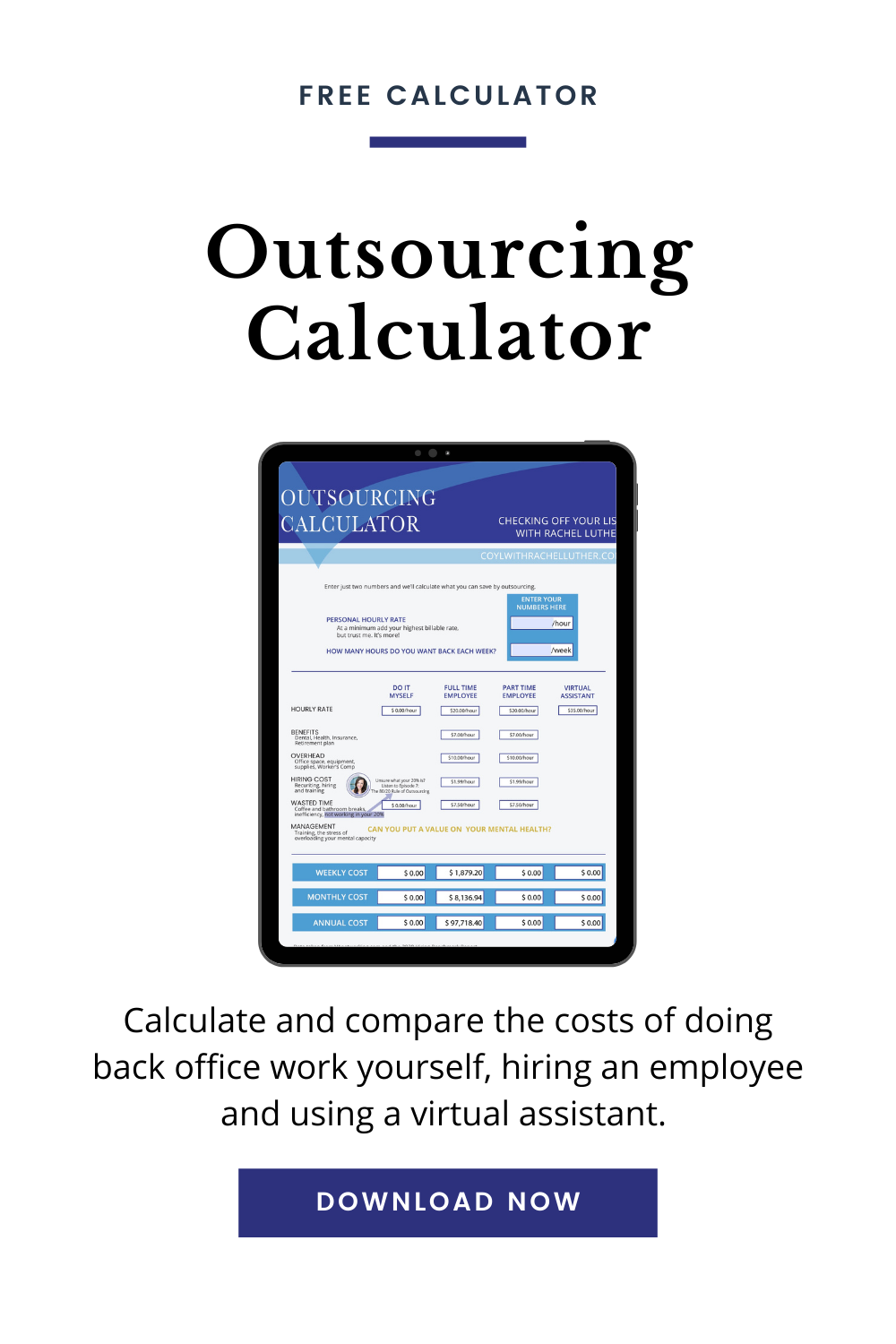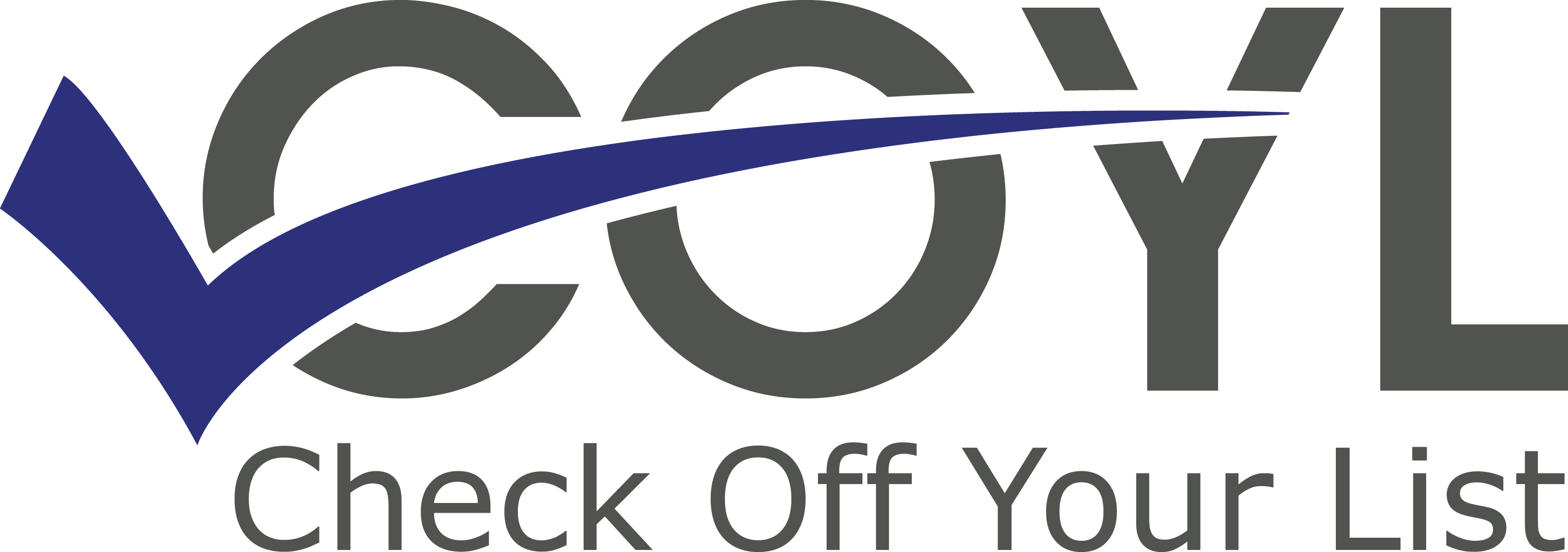How much is not having a virtual assistant costing you?

It may not initially be a tangible number, but fear can be one of the greatest expenses of running a company. It keep us from making big moves that have the potential to revolutionize our business, so fear can cost business owners in big ways. We often self-sabotage, because we don’t feel like we deserve the success or we don’t feel capable of handling the next big thing if it were to actually happen. Now, these are subtle fears, but they have a major impact on our lives. A not so subtle fear for me, like many of you I’m sure, is snakes. Let’s just say, I’m not a fan of snakes. My nightmares are infrequent, but they always include snakes. Now, my life is not greatly impacted by snakes. My children will never have a pet snake as long as they live with me. I’ve had a few run-ins with snakes in the wild, which is part of why I’m not a huge fan of outside. I often say, I only camp at the Hilton if that gives you any idea how I feel about outside.
The fears I’m talking about though, are more abstract than snakes, and they’re more difficult to avoid. We may not have even had the conscious thought to verbalize the fear, and it’s pretty difficult to overcome something you aren’t even aware is a problem. One of the biggest fears I hear when it comes to outsourcing is “Can I afford it?” That’s definitely something to consider, isn’t it? And thankfully, it has a pretty concrete answer. In this episode, I want to help you think through whether you can actually afford to outsource; it’s not worth expanding your team if you can’t do it with confidence.
I get it, numbers, not the most comfortable thing or easiest to talk about...believe it or not, though, one of the lesser-known things about me that is I love talking numbers. Its one of my personal favorite subjects. Like me, some of you might get excited about this fascinating topic...the rest of you I know are about ready to hit the stop button and move on to the next podcast in your queue... But please don’t. Give me 10-15 minutes of your valuable time, and I promise I’ll make it worthwhile. You can even start a countdown...
I often have this inner struggle between the creative actor in me and the logical accountant who has a soft spot for numbers. This is the typical left brain right brain conflict we all know about, but just like truly knowing a character inside and out allows me to perform on stage with confidence, a business owner can make decisions in their business with the same confidence when they know the numbers support their decision. This confidence eliminates the fear in decision making, so that’s what I want to do today. I may not be able to solve my problem with snakes in my nightmares, but I can solve some of your fears about whether you can afford to outsource by looking at the numbers. Basing business decisions on numbers driven data is a whole conversation by itself, but we’re going to keep this conversation strictly related to outsourcing, the cost of employees, the cost of virtual assistants, and ultimately, what will make sense for you.
We’re all familiar with employees, so that one’s easy. I cover some of the basics of what a Virtual Assistant is and the different virtual assistant solutions in episode 2: What in the World is a Virtual Assistant? and I won’t go into all of that today. That’s not the point, but some of it applies to the numbers as you figure out the solution that best fits you. I’ll go over some of the basics. You might already know this, so I’ll keep it brief. If you want to know more, again episode 2. For our purposes right now, the primary thing you need to know is a virtual assistant is a contractor rather than an employee. This means there are some cost differences between the two that you need to consider when deciding if you can afford to outsource. The hourly rate for an employee is significantly less than the hourly rate for a Virtual Assistant, and this is mainly due to their status as a contractor rather than an employee. When employing a contractor, you pay the hourly rate and that’s it. The Virtual Assistant covers the hard and soft costs of the work relationship that an employer would pay for their employee. Let me explore the hard and soft costs a bit.
Hard costs are exactly what you think of when you think of employee costs. It’s healthcare, taxes, and worker's compensation... just general payroll costs. Not to mention it’s any vacation, sick, holiday, or even overtime pay if that applies, which an employer is responsible for paying. Then, you have to consider other hard costs like equipment, software, and general office expenses to provide the employee with whatever they need to do their job. People often don’t realize this, but a Virtual Assistant provides all of that themselves, so there is very little you need to supply. One other thing. You also need to consider the necessary insurance to cover your business. This covers any work done by anyone you hire, like your employee. As a contractor and their own entity, A Virtual Assistant should have their own insurance and be bonded for your protection as well as their protection, so that’s one more cost you don’t have to worry about when you use a Virtual Assistant.
Now, those are all hard costs, and of course this list is probably not exhaustive, but it’s the general idea of the expenses a Virtual Assistant provides within their hourly rate. A Virtual Assistant also covers soft costs that most people don’t even think about. I spent the last three episodes talking about my struggles with hiring and sharing solutions I found along my way to help you through that process. That being said, it’s still a time consuming and stressful experience for most business owners. These are the soft costs. Finding, hiring and training an employee is expensive, and a Virtual Assistant, especially a Virtual Assistant firm that provides a whole team of support, saves you a lot of that effort.
Another soft cost that isn’t so evident when looking at numbers is wasted time. Instead of clocking in each morning then clocking out at the end of the workday, A Virtual Assistant only charges you for productive time working for your business. Yes, virtual assistants are human beings—even though sometimes the work they do can make them seem super-human. No. No. That’s just my bias talking. But unlike employees, you don’t pay them for bathroom breaks, chats with coworkers, and time spent browsing the internet. That lack of productivity adds up overtime, which makes the lower hourly rate of an employee that much more expensive. Don’t get me wrong. A Virtual Assistant still gets to do all of those things, just not on your company’s time.
Another soft cost that is even more difficult to quantify but has a larger impact on your life as a business owner is ownership of the responsibilities. I often refer to this as my mental capacity. I’ll realize I’m overwhelmed. I don’t have enough time in my day for all the things I need to do. I’m frustrated and I’ll think, “I don’t have the mental capacity for all of this!” That’s when I know I need to outsource even more. I evaluate my to do list to eliminate anything that’s crept into it that I’m not passionate about, and I experience almost immediate mental relief. I now have mental capacity for the important things, because I hand the full responsibility of the task to someone who can do it better.
This same mental capacity is affected by the management of your team. With an employee, you are their boss. They report to you. You are responsible to train them, guide them through processes, hold them accountable, all those things that come along with management. On the other hand, a Virtual Assistant takes complete ownership of their responsibilities, which opens up mental capacity. As the expert in the responsibilities you hand them, they manage the processes. They improve your ideas by adding finesse that only comes with their experience in the industry. They should hold themselves accountable. As the business owner, you should be able to mentally check off your list as you hand over those tasks to a Virtual Assistant, because you don’t have to train and manage a Virtual Assistant.
Now, I will warn you. There might be sticker shock as you look into a Virtual Assistant. Depending on which city you pick, Glassdoor’s median job salary for an executive administrative assistant is $20.00 per hour. This hourly rate is only for basic executive assistants and doesn’t take into account the expertise in various back-office support like HR, graphic design, web design, or social media strategy, which a Virtual Assistant provides and should charge a higher rate for. But we’re going to stick with Executive Assistance for our example today. The principle applies no matter the expertise, but this is a good baseline for the purpose of our discussion.
You’ll find that the employee hourly pay is a few dollars lower or higher depending on where you are. Here in Columbus it’s a few dollars less. In New York or LA, it’s a few dollars more. But let’s go with $20 per hour. It’s round. It’s even. It makes my numbers heart happy, because it’s easy to work with. For a Virtual Executive Assistant, you’re going to pay at least $35.00 per hour for that same basic support and often more for their specific expertise, which I promise you want. The difference is the fringe benefits, or the hard and soft costs I was talking about, which an employer of an employee pays. For every $20.00 per hour for an employee, an employer easily pays $15 per hour in fringe benefits.
Initially, that sounds like a wash. Meaning, either way, it’s going to cost about $35.00 per hour to add to your team. Initially, that sounds like an employee costs the same as a Virtual Assistant. But it’s not a wash. No. Let me throw something out there, and I think you’ll understand what I mean. How many of us have killed time on the job? Or how many of us have been asked to do things that we had no idea how to accomplish? It can’t be just me. We’ve all been there at least once. Right? Often times, employees are not needed for the full 40 hour work week.
A Virtual Assistant is on an as needed basis, which you can adjust as the workload changes. Using a virtual assistant for 20-30 hours per week can be just as productive for your business as a 40 hours per week employee. A Virtual Assistant is only functioning in their expertise, so they are functioning at their best whenever they are working for you.
Something else I’m sure you can relate to. We all know there’s a margin of ‘wasted time’ at work. This doesn’t mean employees are lazy. That’s not what I’m saying, so please don’t quote me on that. Employees are hard workers. The issue is with their job description and not having enough responsibilities to keep them working in their expertise. Keeping an employee busy for a full work week often means they are working in areas outside their passion and skillset, so they’re not always as productive and generally waste more time as they figure things out. As a result, they’ll need to take more breaks. When I’m working against my natural inclination or struggling to figure something out or just doing something I don’t like doing, I need to take more breaks throughout the day to stay focused.
This idea of working within your natural inclinations is huge, so if you haven’t, take a few minutes to listen to Episode 7: The 80/20, or 20/80, Rule of Outsourcing. In a nutshell, we all have areas of passion and expertise where we are functioning at our best and we’re excited to tackle the responsibilities inside that work area. That’s your 20%. Outsourcing lets you focus on your 20% by moving your 80% to someone else...just make sure it’s within their 20%. Go listen to it. Just not right now. If you’re not sure what your 20% is, listen to Episode 5. It’s called How to Find What You’re Good at and Do It. I’ll walk you through my personal process of determining my 20% and what to outsource so I spend the majority of my day where I’m passionate and excited to tackle my to do list every day.
When thinking about the 20/80 principle, a possible solution is to find a part time employee at the cheaper rate. Keep them working in their expertise and you get the best of both worlds as long as you can keep the hard and soft costs as low as possible. Believe me, it’s possible, and this is a strategy I initially used when building the Check Off Your List Team. I haven’t always hired full time staff. At first, I hired part time team members. The problem is they aren’t as reliable and often aren’t as qualified as someone fully devoted to their career. There is always an exception to the rule, and I have a few amazing part time employees. They were difficult to find, and I sacrificed a lot of quality over the years for reduced hours, which was more work for me and our Customer Relationship Manager in the long run. A Virtual Assistant is a full-time professional who is fully devoted to their career, and you get the benefits of that without the 40 hours per week salary obligation.
Now, you might have made it this far into the episode, and you’re thinking, “I get what you’re saying, but that price point isn’t in the budget.” I have two thoughts about that, which I think will provide a good alternative as well as provide a new way of considering what fits in the budget.
First, the numbers person in me is thrilled you are considering your budget. If you can’t afford something, you can’t afford something. That’s where numbers are so helpful, because - unlike actors on stage - numbers don’t lie. It’s in front of you in black and what (or red) that you can or can’t afford it. If $35 per hour is outside the budget, I would say you probably aren’t in the place to afford an employee or a Virtual Assistant...yet. There are, however, some very economical Virtual Assistant solutions overseas, which you might consider as a first step. When you outsource overseas, you need intentional communication to guarantee instructions are clear, and it often requires more of your time than a US based Virtual Assistant. You’ll need more edits and clarification throughout the process. That being said, the extra time might be worth it to accommodate a lower price point until you have more flexibility in your budget.
Second, Remember I had two thoughts I wanted to share about staying in budget. Second, I want you to think about your hourly rate when you decide whether you can afford to hire someone. What do you ‘get paid’ per hour when you are working in your niche? I want you to compare that to the cost of a Virtual Assistant. My guess is that you get paid much more than $35 per hour when you’re focused on your expertise and working within the passion that caused you to start your business. That higher rate per hour is what it costs you to do things yourself. Ouch! That’s an expensive Virtual Assistant, and it probably takes you longer than it would take a Virtual Assistant to get the job done, which is a double ouch.
I remember when I initially thought about hiring my first team member. It scared me to think about paying someone, when I didn't feel like I was paying myself what I was worth. My business coach asked me what my hourly rate was. I went with the highest service level that we offered at the time. $60 per hour for the QuickBooks training that I provided to small business owners. This completely undervalued my worth, because running a company is worth far more than QuickBooks training, but it was a tangible number I could use at the time. I hired my first team member and based on that $60 per hour number, profits immediately went up. I was able to sell more services with the ‘extra’ time I had available, which more than covered the cost of the new team member.
This is why I love numbers so much. Numbers give tangible proof that something is or isn’t working, and that eliminates some of the fear in making the decision. While I can’t necessarily apply this to my fear of snakes and aversion to the outdoors, You can apply this to your decision about hiring a new team member. To make it easy, I created a calculator that you can download for free. It’s with the resources for this episode, so go to coylwithrachelluther.com to download it. You just have to enter a few fields of information, like your hourly rate, and you will receive a good estimate of how much it’s truly costing you to do things yourself in comparison to an employee and a Virtual Assistant.
Time and money are the two primary reasons to outsource. We all want more of one or the other … probably both. My guess is it’s why you’re listening to this podcast. Hopefully, some of your fears about the money side of outsourcing have subsided, and I hope you download the calculator. It’s eye opening and seeing the numbers should give you the confidence you need to make the next step.
I also talked about mental capacity today, and I want to explore that more. As you add to your team, how do you manage them without that becoming one more thing on your to do list... possibly a full-time job in and of itself? Your team should expand your mental capacity, and that only happens with excellent management. Well, in the next episode, I am going to introduce you to Alissa Berzak, who is our Customer Relationship Manager at Check Off Your List. She manages the entire Virtual Assistant team, so you get to listen in on our conversation as we discuss how to most effectively manage a team. Be sure to subscribe so you can listen to the next episode of Checking Off Your List with Rachel Luther.





